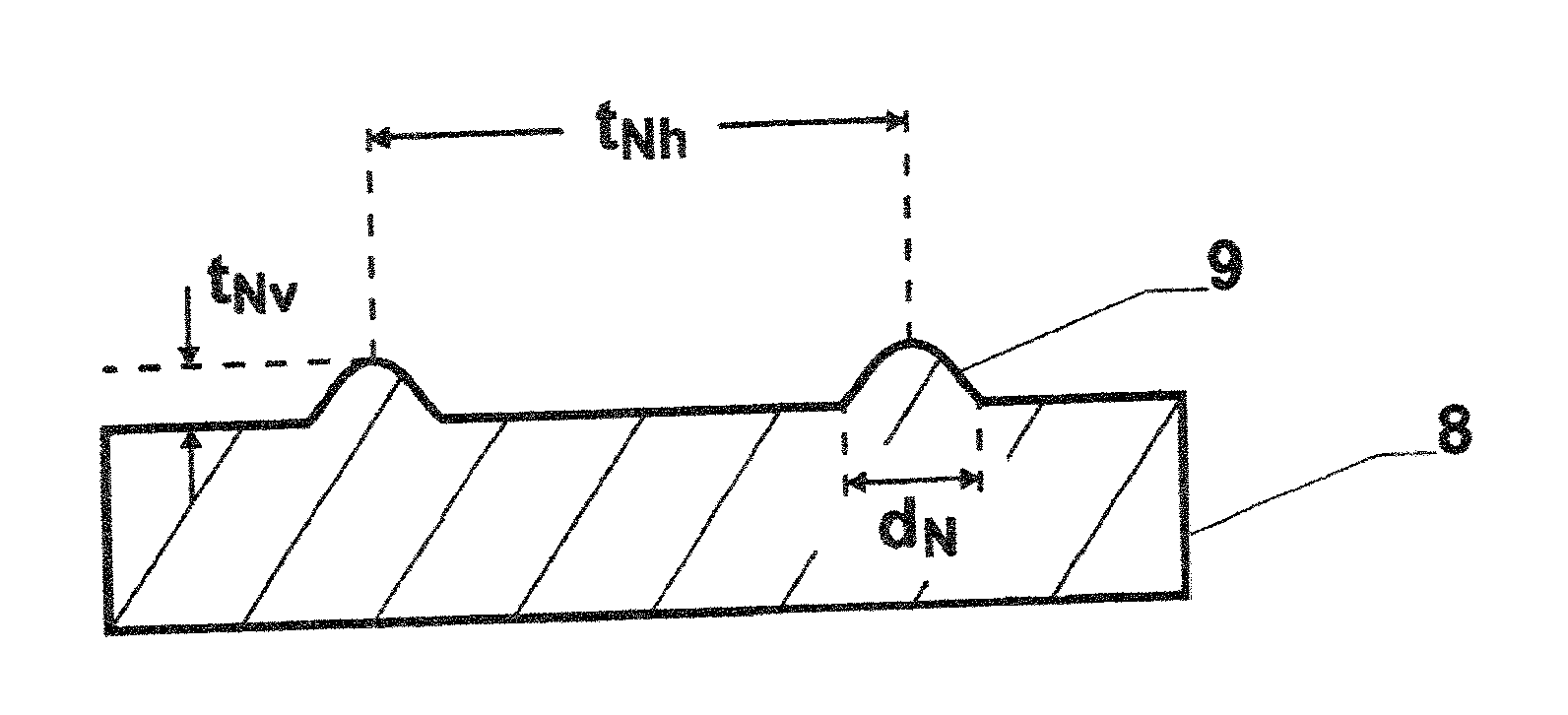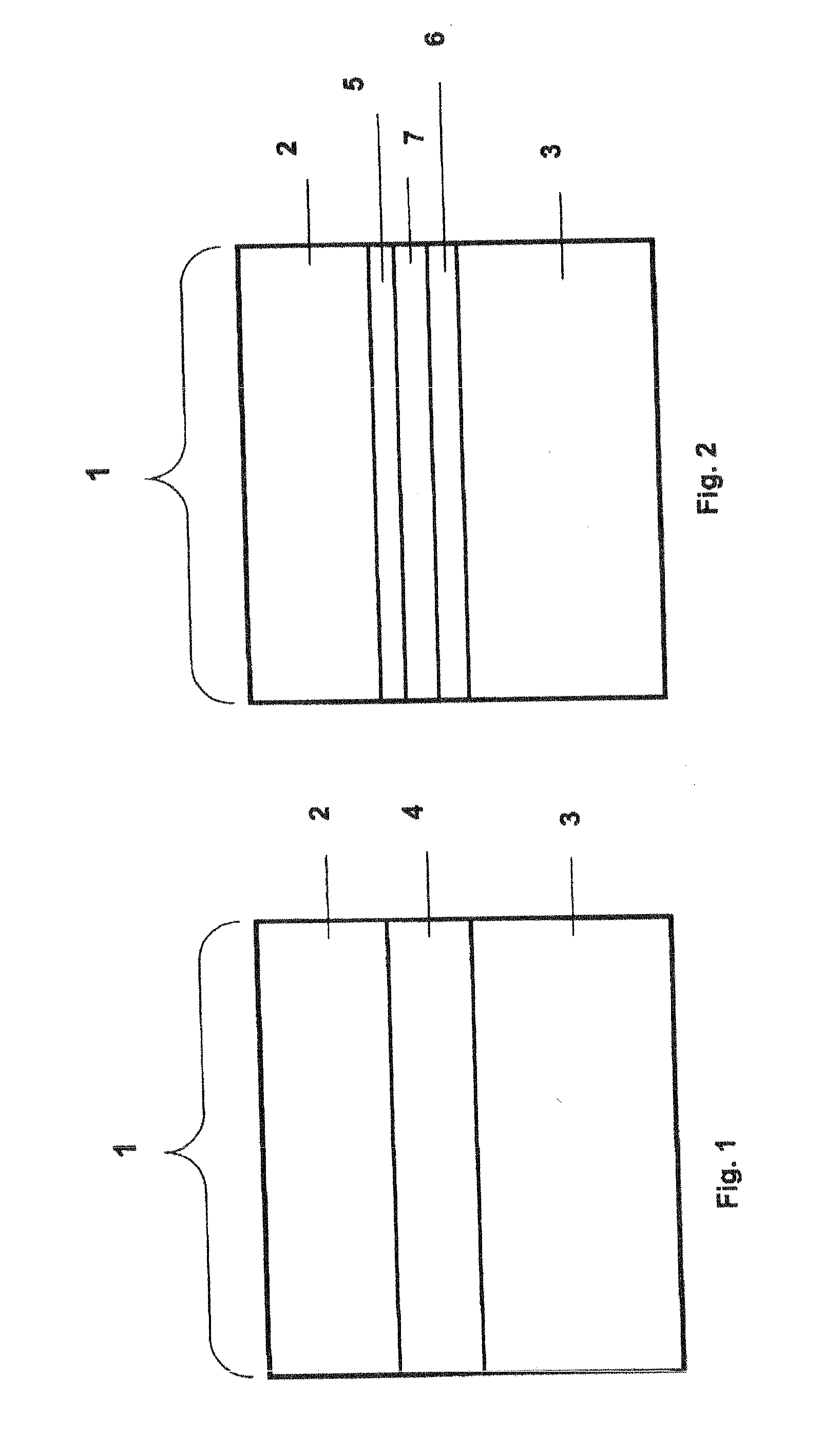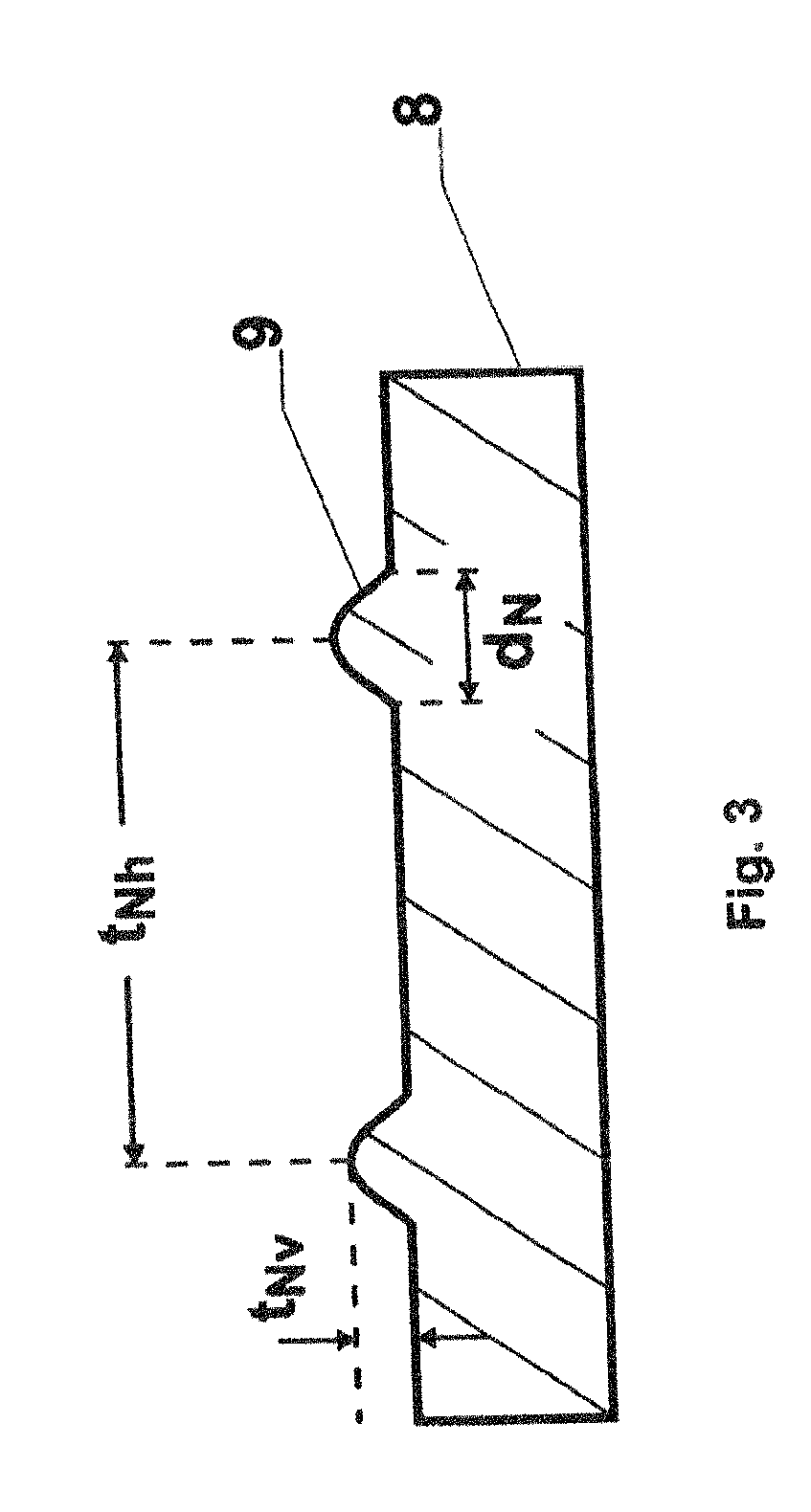Photovoltaic modules having reduced weight
a technology of solar modules and modules, applied in the field of solar modules having low weight, can solve the problems of laborious handling of large modules, high mechanical loads in prefabricated building members and roof structures, and high bending stress in module components, and achieve the effect of low weight and high mechanical toughness
- Summary
- Abstract
- Description
- Claims
- Application Information
AI Technical Summary
Benefits of technology
Problems solved by technology
Method used
Image
Examples
example 1
[0071]A square solar module having an edge length of 2 m has a front pane which consists of lime natron silicate glass having a coefficient of expansion of 8.5·10−6 1 / K. The thickness of the front pane is 0.9 mm. The sum of the thicknesses of the intermediate layers including the cells is 1.3 mm. The back pane also consists of lime natron silicate glass having a coefficient of expansion of 8.5·10−6 1 / K and is thermally pre-tensioned with a flexural strength of at least 90 MPa. Its thickness is chosen to be 4.5 mm.
example 2
[0072]A rectangular solar module having an edge length of 2.5 m and 1.5 m has a front pane which consists of borosilicate glass having a coefficient of expansion of 4.5·10−6 1 / K. The thickness of the front pane is 0.7 mm. For improving impact strength on both sides of the front pane burling in a hexagonal arrangement with a height of 0.15 mm and a density of 20 cm−2 is rolled in. The sum of the thicknesses of the intermediate layers including the cells is 1.4 mm. The back pane also consists of borosilicate glass having a coefficient of expansion of 4.5·10−6 1 / K and is thermally pre-tensioned with a flexural strength of at least 90 MPa and has a thickness of 5 mm.
example 3
[0073]A square solar module having an edge length of 2 m has a front pane which consists of lime natron silicate glass having a coefficient of expansion of 8.5·10−6 1 / K. The thickness of the front pane is 0.9 mm. The sum of the thicknesses of the intermediate layers including the cells is 1.3 mm. The back pane consists of lime natron silicate glass having a coefficient of expansion of 8.5·10−6 1 / K and has wavy structure with a rising height of 1 mm and a height density of 5 cm−2 in hexagonal arrangement by gravity depressions for improving flexural rigidity. The back pane is thermally pre-tensioned with a flexural strength of at least 90 MPa and has a thickness of 4 mm.
PUM
 Login to View More
Login to View More Abstract
Description
Claims
Application Information
 Login to View More
Login to View More - R&D
- Intellectual Property
- Life Sciences
- Materials
- Tech Scout
- Unparalleled Data Quality
- Higher Quality Content
- 60% Fewer Hallucinations
Browse by: Latest US Patents, China's latest patents, Technical Efficacy Thesaurus, Application Domain, Technology Topic, Popular Technical Reports.
© 2025 PatSnap. All rights reserved.Legal|Privacy policy|Modern Slavery Act Transparency Statement|Sitemap|About US| Contact US: help@patsnap.com



